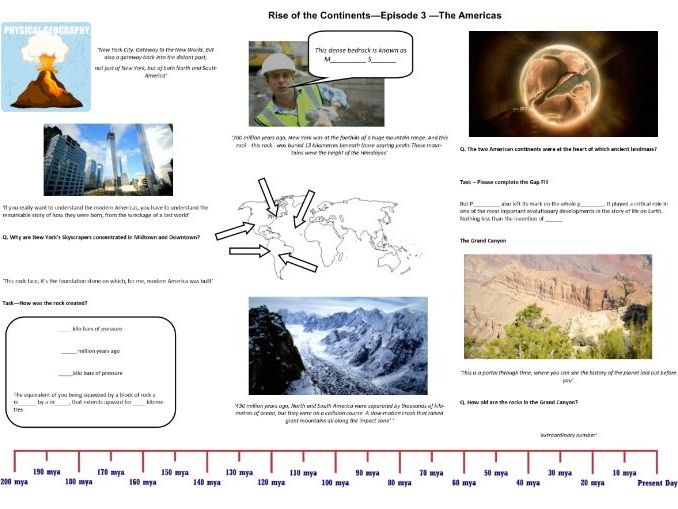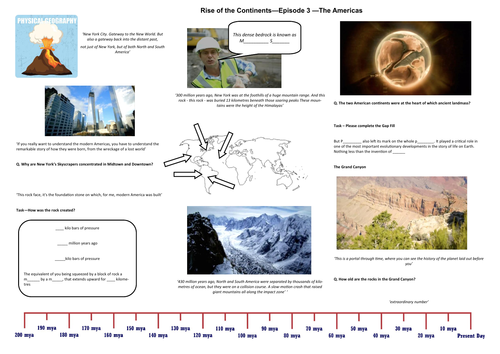


Professor Iain Stewart uncovers clues hidden within the New York skyline, the anatomy of American alligators and inside Bolivian silver mines, to reconstruct how North and South America were created. We call these two continents the New World, and in a geological sense they are indeed new worlds, torn from the heart of an ancient supercontinent - the Old World of Pangaea.
Iain starts in New York, where the layout of the city’s skyscrapers provide a link to a long-lost world. Deep within their foundations is evidence that 300 million years ago New York was at the heart of a huge mountain range - part of the vast supercontinent called Pangaea.
Trekking into the Grand Canyon, Iain uncovers a layer of sandstone from Pangaean times that shows there was a vast desert either side of the mountains. Footprints in the rocks of the Grand Canyon reveal that there was only one type of animal that could thrive here - a newly evolved group called the reptiles. Iain meets the closest living relative of those early reptiles - the alligator.
Two hundred million years ago, Pangea underwent a transformation. North and South America were carved from Pangaea, and pushed westwards as separate island continents. To see how this westward movement shaped South America’s often bloody human history, Iain travels to Potosi in Bolivia. Cerro Rico is one of the most dangerous mines in human history. Iain goes to the heart of this extinct volcano to reveal the process that has shaped South America - subduction.
Subduction has also created the longest continual mountain range in the world - the Andes. At its heart lies the stunning ethereal landscape of the Salar de Uyuni, a vast salt flat where a lake has been uplifted thousands of metres above sea level. The lithium found here may be a new source of mineral wealth for Bolivia, for use in mobile phones.
The last chapter in the story of the Americas is told through that most typically Andean animal, the llama. But like much of South America’s wildlife it originated in North America, and only came south when the two island continents of North and South America joined three million years ago.
Since that momentous joining the story of the Americas has been a shared one. Together they continue their westward drift away from the Old World. However, on a cultural and economic level you could argue that the opposite is the case. In our new global economy the Americas are at the very heart of our connected world.
Written in Publisher and formatted to A3 the worksheet can be saved as a PDF for A4 printing
Get this resource as part of a bundle and save up to 33%
A bundle is a package of resources grouped together to teach a particular topic, or a series of lessons, in one place.
Something went wrong, please try again later.
This resource hasn't been reviewed yet
To ensure quality for our reviews, only customers who have purchased this resource can review it
Report this resourceto let us know if it violates our terms and conditions.
Our customer service team will review your report and will be in touch.